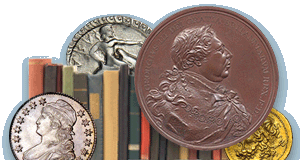
PREV ARTICLE
NEXT ARTICLE
FULL ISSUE
PREV FULL ISSUE
NEW BOOK: CATALOG OF INDIA POSTAL ORDERSAnil Bohora has published a new book on Postal Orders used in India. Here's an excerpt and some sample pages. -Editor On January 1st 1881 Great Britain became the first country in the world to issue Postal Orders. Ten different denominations were issued. Indian Postal Notes were introduced on 1st January 1883 and withdrawn on 31st October 1886. Indian Postal Orders were introduced on 1st April 1935. Postal Order is an order for payment of a specified sum to a named payee, issued by the Post Office very similar to a bank cheque. Postal Orders provide a convenient means of transmitting small sums of money by post. Postal Orders for set values can be bought at the post office. They could then be sent by the post and redeemed by the recipient at their local post office. Postal orders could be paid into a Post Office savings account, a bank account, or exchanged for cash. Indian Postal Order can be crossed like bank cheques. Indian Postal Order were in great demand when the banking was not widely available. Indian Post Offices had better and wider network in rural areas and small town than the banks. The Electronic Indian Postal Order (e-IPO) was introduced on 22nd March 2013, initially only for Indian citizens living abroad. The e-IPO can be used for online payment. The service was expanded for all Indian citizens on 14th February 2014. Money Remittance Services Offered by India Post India Post with more than 150,000 branches across the country provides money remittance services. Money Order and Postal Order were the only means of money remittance in old days. India Postal Notes India Postal Notes were issued soon after the introduction of British Postal Orders in UK. As they were not very popular with the common public they were withdrawn soon after. The printed Indian Postal Notes themselves were of no monetary value. Specially introduced adhesive postage stamps must be pasted on the Indian Postal Notes for them to be of the required monetary value. East India Company's adhesive postage stamps of the denomination of the India Postal Note, specially overprinted at Calcutta, with text “I P N”, “I” at the top, lower down “P” to left, and “N” to right were used. An adhesive postage stamp of the value, 8 Annas (Issue 1868 SG #73), 1 Rupee (Issue 1874 SG #79) or 12 Annas surcharged with “Rs 2, As 8” (Issue 1876 SG #82) is affixed in the center square.
To read the complete book, see:
Wayne Homren, Editor The Numismatic Bibliomania Society is a non-profit organization promoting numismatic literature. See our web site at coinbooks.org. To submit items for publication in The E-Sylum, write to the Editor at this address: whomren@gmail.com To subscribe go to: Subscribe All Rights Reserved. NBS Home Page Contact the NBS webmaster 
|





